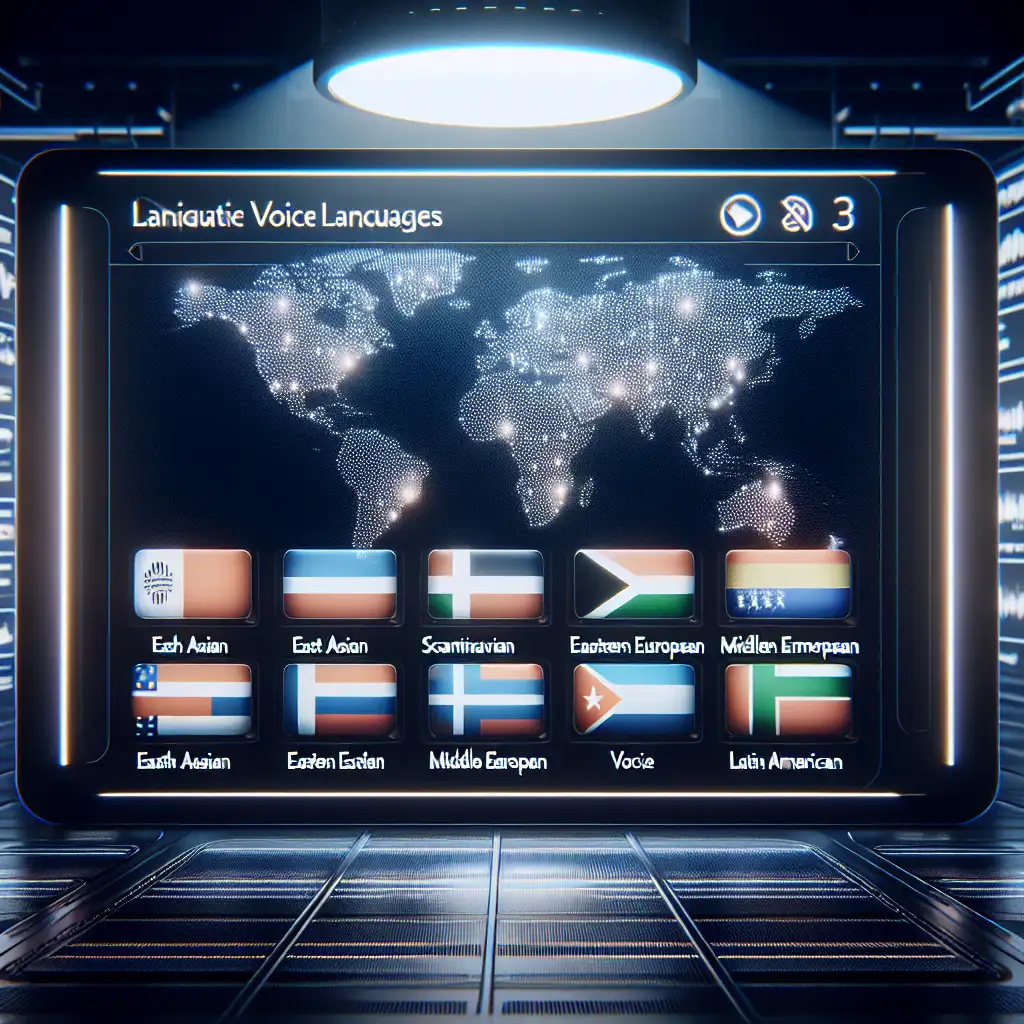Deploying Google Cloud Text-to-Speech (TTS) in customer-facing software isn’t just a matter of flipping a language code. For teams concerned with user engagement across regions, the language and voice selection step becomes paramount—blunt mismatches can torpedo adoption.
Language Selection: Beyond Defaults
Default voices (en-US-Standard-B, es-ES-Standard-A, etc.) often target the US and are suboptimal for non-US audiences. Google Cloud TTS, as of v1.0.0 and API updates in 2023, covers 40+ languages and 220+ voices. But regional nuance matters.
Example: A call center platform targeting Latin America will generate friction if deployed with a Castilian Spanish (es-ES) voice for Mexican callers. Instead, select es-MX-Wavenet-D to match local pronunciation and idioms—minute differences, but highly perceptible to native speakers.
Steps to Select and Validate Voices
1. Profile the Audience
- Map deployment regions to ISO language codes (
en-AU,fr-CA,pt-BR). - Check analytics: iOS device locale can differ from app locale; log both.
- For multinational rollouts, capture and persist user language preferences to avoid re-detection on every session.
2. Enumerate Supported Voices
Google CLI and Python API both return supported languages/voices. The CLI occasionally lags behind the API in reflecting the latest additions.
gcloud texttospeech voices list --filter="languageCodes:es"
Python, for programmatic checks:
from google.cloud import texttospeech
client = texttospeech.TextToSpeechClient()
for voice in client.list_voices().voices:
print(voice.name, voice.language_codes, voice.ssml_gender)
Note: Gender and "Wavenet" models use newer DeepMind networks: quality is noticeably higher for Wavenet than for Standard in side-by-side audio tests.
3. Audio QA: Never Skip Live Review
Always synthesize sample audio using intended phrases—edge-case words, local slang, and business-specific terms. For instance, in e-learning:
synthesis_input = texttospeech.SynthesisInput(text="Bienvenidos, alumnos. Próxima lección: química avanzada.")
voice = texttospeech.VoiceSelectionParams(
language_code="es-MX",
name="es-MX-Wavenet-B"
)
config = texttospeech.AudioConfig(audio_encoding=texttospeech.AudioEncoding.MP3)
audio = client.synthesize_speech(synthesis_input, voice, config)
with open("es_mx_sample.mp3", "wb") as f:
f.write(audio.audio_content)
4. Dynamic Language Routing (If Required)
Build-in application logic to auto-switch TTS language per user profile or session. For chatbots, trigger based on detected browser Accept-Language header. In one internal deployment, relying only on user device language resulted in 8% misrouted voices—fixable by incorporating explicit in-app language selection.
5. Pronunciation Corrections: SSML
Fine-tune for abbreviations, rare names, or technical terms.
<speak>
El apoyo de <say-as interpret-as="spell-out">UNAM</say-as> fue esencial.
</speak>
Wraps critical acronyms, improves TTS output. Gotcha: Overuse or poor nesting of SSML sometimes triggers 400 INVALID_ARGUMENT errors.
Case Study: Multinational LMS Rollout
LMS platforms typically bucket all Spanish speakers under ‘es’, leading to robotic neutrality. One deployment shifted to per-country voices: es-AR-Wavenet-B, es-ES-Wavenet-B, etc. Direct feedback referenced "naturalness" and "trustworthiness," especially for science and mathematics modules—no small impact.
| Region | Language Code | Recommended Voice |
|---|---|---|
| Spain | es-ES | es-ES-Wavenet-B |
| Mexico | es-MX | es-MX-Wavenet-D |
| Argentina | es-AR | es-AR-Wavenet-C |
Pitfalls/Trade-offs
- API Quotas: Synthesizing many samples to test nuances can quickly consume quota. Batch requests for QA, then cache.
- Lag in New Languages: Google occasionally introduces new voices, but not all regions/parity features roll out at once.
- Edge Cases: Words with multiple regional meanings—TTS can’t disambiguate “pollo” (slang vs. literal) without more context.
Key Recommendations
- Prefer regionally-specific voices over generic (e.g.,
en-INfor India). - Use Wavenet voices whenever budget allows—clarity is markedly better.
- Don’t skip SSML for tough or branded terms.
- Regularly audit Google's official list as new voices appear monthly.
- Log which voice presets get used; adjust as user demographics shift.
Sometimes, even when everything’s configured, a voice just "sounds off" for your use case. Trust team feedback—and, if necessary, seek alternatives outside Google’s offering (AWS Polly, IBM Watson), although cross-provider matching can be rough.
Note: Want help auditing your current TTS configuration for regional accuracy? Post your voice matrix or region list. A misaligned accent can undo months of engagement effort—not dramatic, just real.
